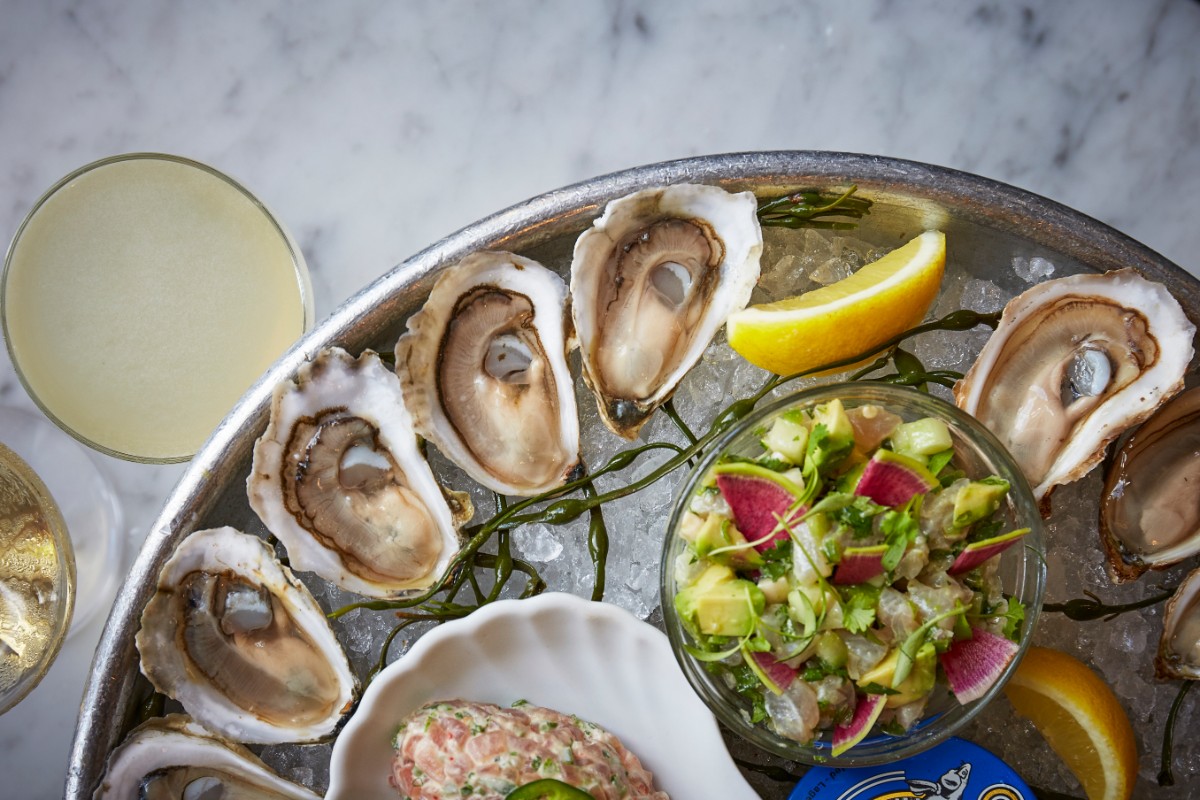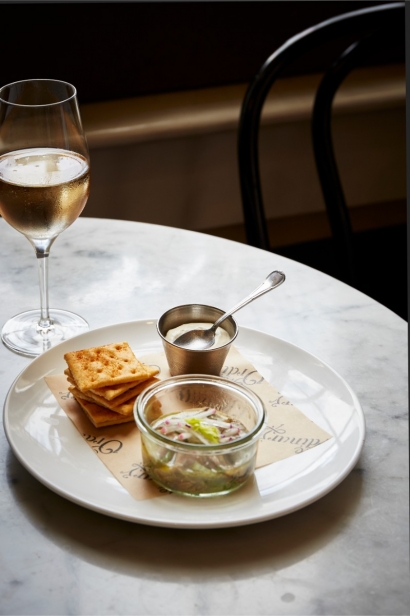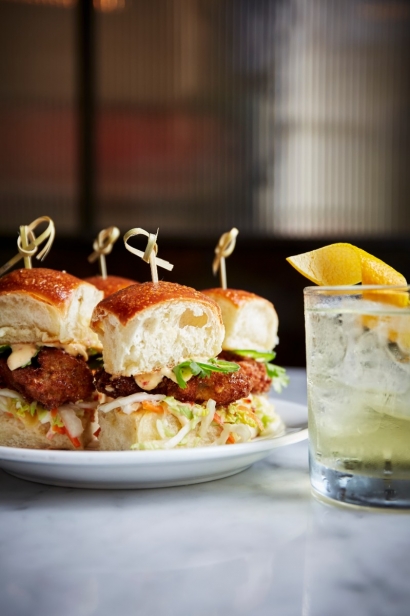White, Red or Other? Go Fish!
If your knowledge of how to pair food with alcohol has only gotten as far as red with beef, white with fish, you’re missing out on a whole lot.
At The Ordinary, the Charleston seafood restaurant helmed by James Beard Award-winning chef Mike Lata, drinks are paired with seafood based more on flavor profiles, accompaniments and even the seafood’s origin. Dining room manager Gram Howle and head bartender Lane Becker chatted recently about the secrets of pairing.
The first secret? Learn some basics, then just get what you like. “When it comes to pairing, there is no absolute right way or wrong way,” Howle says. “Plenty of red wines are great with seafood, and there are plenty of whites that go well with more meaty, aggressive fish dishes. A general rule is lighter dishes with more delicate flavors and textures need a lighter wine that will not overpower the dish.”
Keep in mind, though, that you may love a particular food and you may also love a particular wine, but that doesn’t mean they will play well together.
“When in doubt, champagne goes with everything,” Becker says. “The adage is that bubbles go with fried food, that you want a little bit of residual sugar with spicy foods and don’t have anything super full-bodied—white or red— because the high alcohol and high tannins can react poorly with something like oysters.”
Becker and Howle also like to serve rum cocktails, both for their versatility and because rum trading goes with the nautical spirit of a seafood restaurant. The diversity of rums also allows them to calibrate the strength of the cocktail with the boldness of the accompanying seafood dish.
“High alcohol can be a bully to your palate,” Becker says. What drinks you serve may depend not just on the seafood, but also on the sauces or sides served with the seafood since they can change the whole taste profile of a dish. And, get any two chefs together, and they may never agree about whether the wine served with their creations should contrast with the flavors, complement the flavors or echo them.
“Certain wines, for instance, can have a buttery taste and the dish is buttery. The butter becomes less of a focal point and takes a back seat so that the other flavors in the wine and food stand out instead,” Becker says. It’s a lot to consider.
Still, here are some easy suggestions:
Grilled Seafood
Cocktail: Sherry daiquiri. “For a grilled fish dish, especially with other, bolder flavors on the plate, the acid of the lemon and the food-friendliness of the dry sherry tends to provide good balance,” Becker says.
Wine: Depending on the sauces, a Chenin Blanc if white sauce, especially if the fish is meaty; a low-tannin like a Cru Gamay from Beaujolais, if red sauce. “A Chenin Blanc has some weight, body and richness so it can stand up to aggressive flavors, but it also tends to be a high-acid wine and these sorts of profiles tend not to overpower the dish,” Howle says. “And the Cru Gamay from Beaujolais has a delicate texture and a sometimes peppery finish.”
Fried Seafood
Cocktail: Something bitter, like The Ordinary’s Feel the Rhythm, the restaurant’s version of a white negroni.
Wine: Sparkling wine. “A really good one is something like a sparkling Pinot Noir rosé,” Becker says. “It’s like pairing champagne with fried chicken. It’s a fun pairing and the sparkling wine acts almost as ‘scrubbing bubbles’ against the fat.”
Creamy Seafood
Cocktail: With a cream sauce, “you could stand to have something with a little more alcohol and richness. like a mai tai,” Becker says.
Wine: A white Burgundy. “You can stand a little oak presence with the wine, something a little less acidic,” Howle says. “It stands up to the creaminess of something like our New England Fish Stew. You want something that has a fuller body, more alcohol and richness.”
Shellfish
Cocktail: Classic daiquiri. Becker recommends a daiquiri because it is “crisp, bright, refreshing. We don’t want too many flavors to get in the way of something as nuanced as an oyster.”
Wine: The sauce can change the wine you choose, but if you’re eating oysters, clams or shrimp from the raw bar, The Ordinary likes to serve Muscadet. “It is from near the ocean in France and can have those very mineral, salty flavors that are the same sorts of flavors you would put into shellfish. They call it the working man’s oyster wine in France,” Howle says. A good rule of thumb is that you can’t go wrong with grapes that grow near the coast, where the seafood is caught. With coastal grapes, “the ocean kisses the wine with a slight salty, savory quality,” Howle says, which makes them go well with seafood. The main thing to consider is that, if you are serving a seafood dish from a particular country or culture, serve wine from that country or culture. “We say it a lot here. If it grows together, it goes together,” Howle says.










